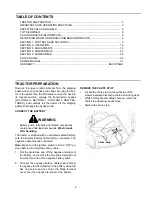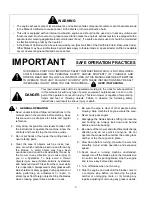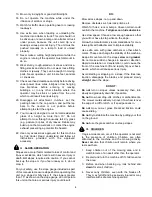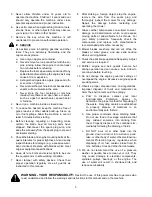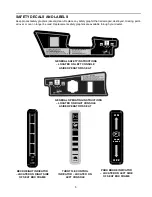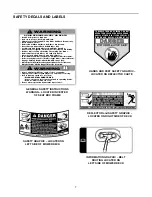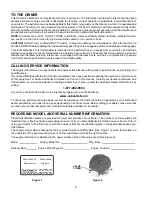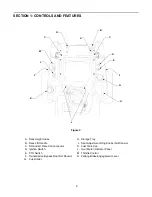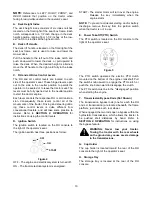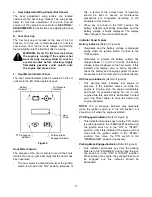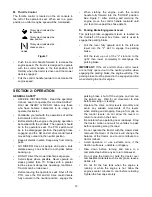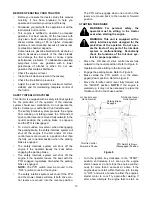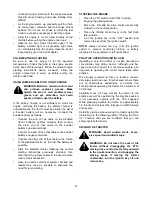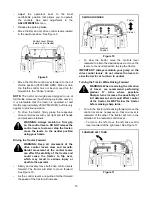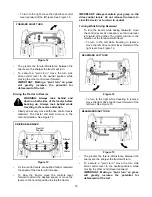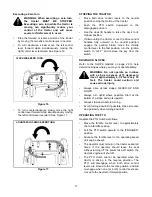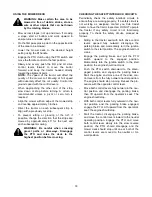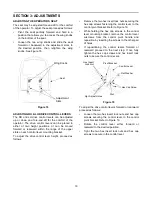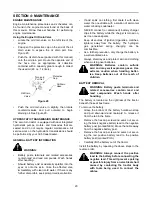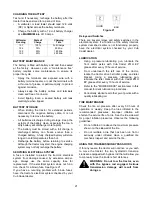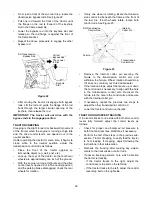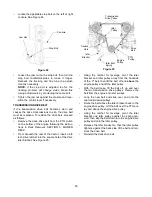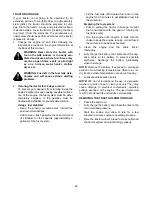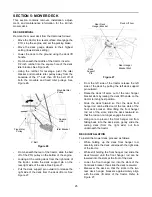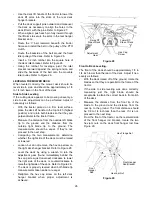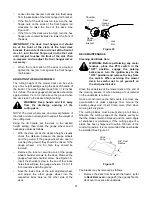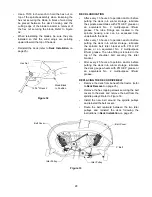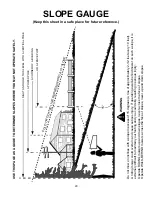
14
not keep trying to start it with the choke closed as
this will cause flooding and make starting more
difficult.
•
As the engine warms up, gradually pull the throt-
tle control lever rearward past the choke detent
position. Do not use the choke to enrich the fuel
mixture, except as necessary to start the engine.
•
Allow the engine to run for a few minutes at mid
throttle before putting the engine under load.
•
Observe the hour meter/indicator panel. If the
battery indicator light or oil pressure light come
on, immediately stop the engine. Have the tractor
inspected by your Cub Cadet dealer.
COLD WEATHER STARTING
Be sure to use the proper oil for the expected
temperatures (Check the table in the engine section
at the back of this manual). Follow the normal engine
starting instructions above. However, allow the
engine ample time to warm up before putting the
tractor under load.
USING JUMPER CABLES TO START ENGINE
WARNING: Batteries contain sulfuric acid
and produce explosive gasses. Make
certain the area is well ventilated, wear
gloves and eye protection, and avoid
sparks or flames near the battery.
If the battery charge is not sufficient to crank the
engine, recharge the battery. If a battery charger is
unavailable and the tractor must be started, the aid of
a booster battery will be necessary. Connect the
booster battery as follows:
•
Connect the end of one cable to the disabled
tractor battery’s positive terminal; then connect
the other end of that cable to the booster
battery’s positive terminal.
•
Connect one end of the other cable to the booster
battery’s negative terminal.
•
Connect the other end of that cable to the frame
of the disabled tractor, as far from the battery as
possible.
•
Start the disabled tractor following the normal
starting instructions previously provided; then
disconnect the jumper cables in the exact reverse
order of their connection.
•
Have the tractor’s electrical system checked and
repaired as soon as possible to eliminate the
need for jump starting.
STOPPING THE ENGINE
•
Place the PTO switch in the “OFF” position.
•
Engage the parking brake.
•
Move the RH and LH drive control levers fully
outward in the neutral position.
•
Place the throttle control lever to the fast (high
idle) position.
•
Turn the ignition key to the “OFF” position and
remove the key from the ignition switch.
NOTE:
Always remove the key from the ignition
switch to prevent accidental starting or battery
discharge if the equipment is left unattended.
PRACTICE OPERATION (INITIAL USE)
Operating a zero-turn tractor is not like operating a
conventional type riding tractor. Although and be-
cause a zero-turn tractor is more maneuverable, get-
ting used to operating the control levers takes some
practice.
We strongly recommend that you locate a reason-
ably large, level and open "practice area" where there
are no obstructions, pedestrians, or animals. You
should practice operating the tractor for a minimum of
30 minutes.
Carefully move (or have moved) the tractor to the
practice area. When performing the practice session,
it not necessary operate with the PTO engaged.
While practicing operate the tractor at approximately
1/2 throttle and at less than full speed in both forward
and reverse.
Carefully practice maneuvering the tractor using the
instructions in the following section "Driving the Trac-
tor." Practice until you are confident that you can
safely operate the tractor.
DRIVING THE TRACTOR
WARNING: Avoid sudden starts, exces-
sive speed and sudden stops.
WARNING: Do not leave the seat of the
tractor without disengaging the PTO,
moving drive control levers fully outward
in the neutral position, and engaging the
parking brake. If leaving the tractor
unattended, turn the ignition key off and
remove key.


